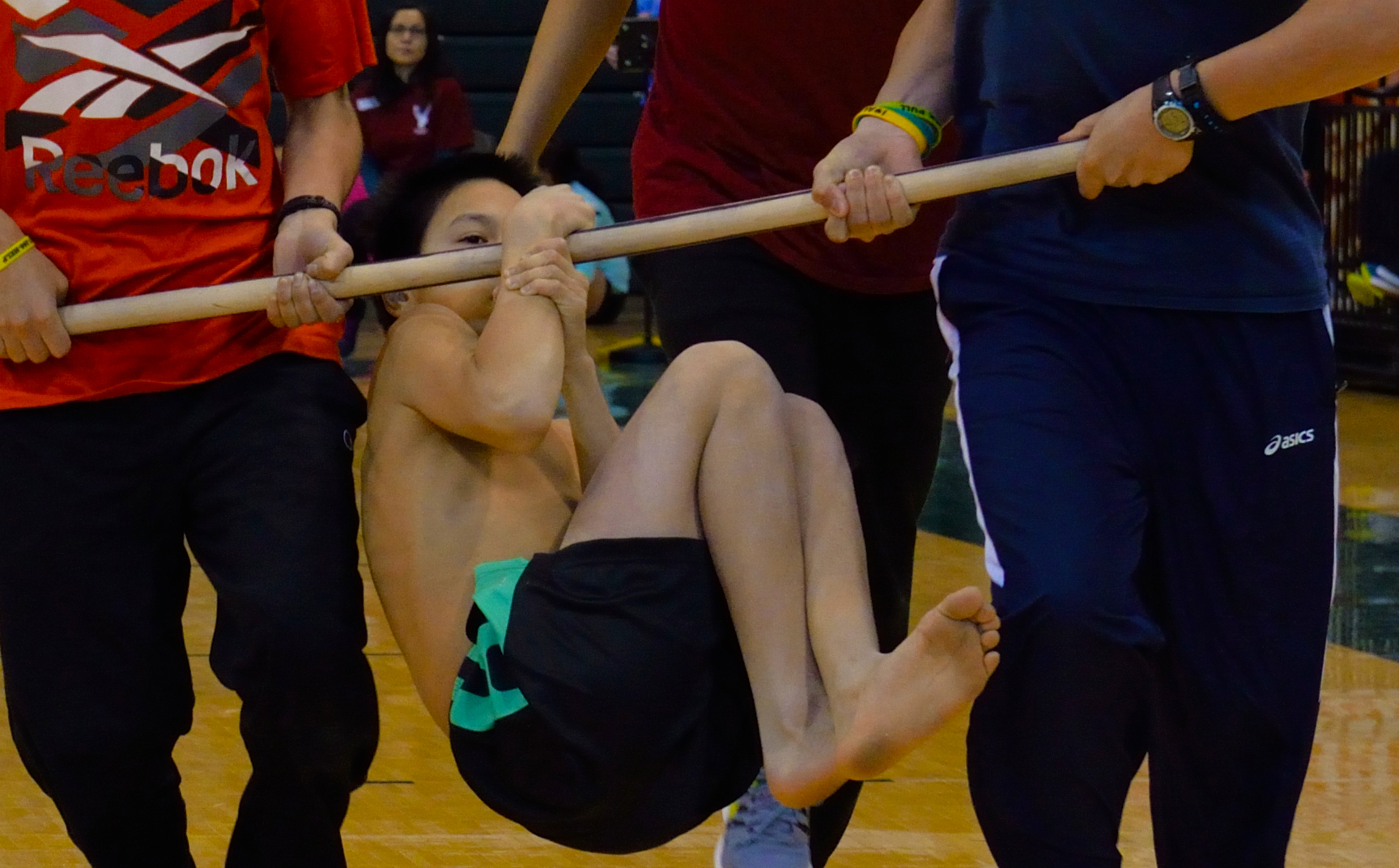
Bulk may rule the football field, brawn the wrestling mat and height the basketball court, but compact, slim athletes dominate the wrist carry, one of nearly a dozen competitive events at the Native Youth Olympics (NYO), an annual event produced by CIRI-affiliated nonprofit Cook Inlet Tribal Council (CITC) and sponsored in part by CIRI.
More than 50 teams from across the state participated in this year’s games, held April 21-23 at the Alaska Airlines Center on the University of Alaska Anchorage campus.
NYO is based on traditional athletic contests and games developed by Alaska Native people to help develop skills critical to everyday life. The wrist carry, for instance, represents the significance of a successful hunt. The Eskimo stick pull was traditionally used as practice for pulling seals from the ice. The kneel jump strengthens the leg muscles used for ice floe-hopping and lifting prey after a successful hunt.
“There is amazing history behind the games,” said Kelly Hurd, senior development director for CITC. “NYO celebrates not only the survival skills and athletic prowess of the Alaska Native people, but the communal values they relied on to survive.”
Sportsmanship, she emphasized, is key. “All the athletes are striving for their personal best, but they’re ranked on sportsmanship. You’ll see athletes in the final countdown giving pointers to their competitors.”
While the games themselves are Alaska Native in origin, students (grades 7-12) of all traditions may participate in NYO; they need not be of Native descent. A goal of the games, Hurd emphasized, is cross-cultural understanding, “but with events like the Sailor Boy Pilot Bread Cracker recipe contest, it’s also about community and fun.” For many athletes, especially those living off the road system, the trip to Anchorage means a chance to check out colleges, visit museums and historical attractions, dine out, shop and socialize.
Steven Gregory, a high-school teacher from Unalaska, has coached NYO male athletes for 16 years. “In addition to physical conditioning, I love what the games instill as far as values – the continuity and camaraderie of it all,” he said. “It’s also about passing down knowledge. Last week in practice, I had three generations of competitors who’d returned to help coach the younger kids. You don’t see poor sportsmanship or bad attitudes. It’s all positive.”
Kaye Gumera, a junior at Unalaska City High School, is no stranger to NYO – she has been competing in the games since she was in seventh grade. While the one-foot high kick is her “signature” event, she competes in nine events total. “NYO is like a mini-community,” Gumera said. “I like how it’s open to everyone. You learn about other cultures, but you also learn a lot about yourself. Everyone is very friendly. We all have respect for the sport.”
A year-round program with a quantifiable positive impact on more than 2,000 youth each year, NYO participants benefit from stronger academic performance and improved physical and mental health. According to a 2015 survey of 411 athletes, 75 percent credited NYO as an incentive to stay in school, 74 percent improved or maintained good grades, 69 percent improved self-confidence and 47 percent indicated improved leadership and self-esteem.
2016 represents the 46th year of the games and the 30th year CITC has been involved. “This is a tight economy. As NYO is made possible by corporate and individual funders, we were nervous,” Hurd said. “But from a fundraising perspective, this ended up being one of our most successful years ever. To be celebrated and supported this way, it’s a testament to how much our state values NYO and our youth.”
For information, visit citci.org/event-programs/nyo-games.



